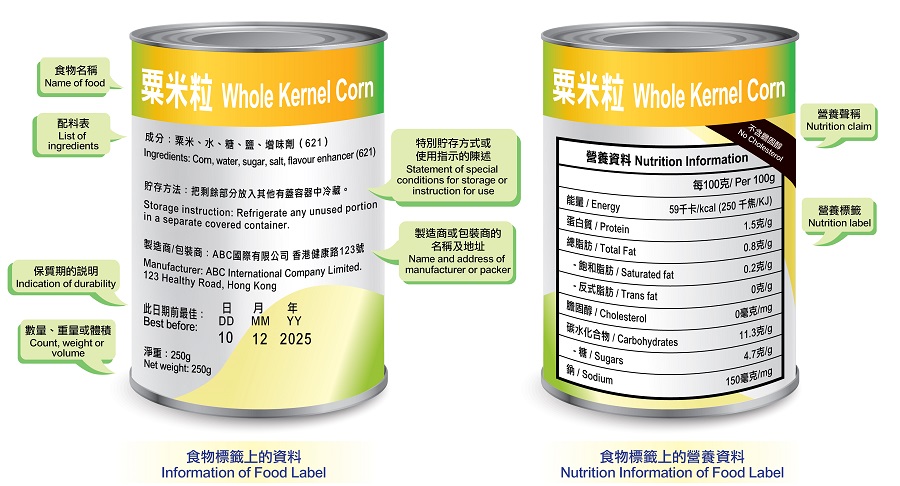
Food Safety Focus (183rd Issue, October 2021) – Incident in Focus
Food Labelling – Providing Informed Choices for Consumers
Reported by Mr. Arthur YAU, Scientific Officer,
Risk Communication Section, Centre for Food Safety
In recent months, the Centre for Food Safety had found samples of prepackaged food containing sulphur dioxide but with the labelling of the food additive missing, therefore not complying with the local food labelling requirements. More than just a legal requirement for food traders, food labels also help consumers make informed decisions when purchasing food and help them store and consume the purchased food safely.
What is Food Labelling?
Food labelling is an important communication channel to inform consumers about what the product is, what it contains and how to handle, prepare and consume it safely. As societies are moving from direct purchases from people who produce the food to international trade of prepackaged food, it is important to provide trustworthy and precise descriptions to consumers.
The Food and Agriculture Organization (FAO) describes food labels as the information presented on food products, which include tag, brand, mark, pictorial or other descriptive matter, written, printed, stencilled, marked, embossed or impressed on, or attached to a container of food or food product. The information, including ingredients, quantity and nutritional value, can accompany the food or be displayed near the food to promote sale.
Figure 1: Different parts of food labelling for prepackaged food in Hong Kong.
Why is Food Labelling Useful?
Food labelling is useful in many ways. It can discourage food sellers from making false representations on a package, as they are legally required to ensure accuracy of the information presented. Also, the expiration and best before labelling is an attempt to reduce food waste. In view of the increasing health burden of diet-related non-communicable diseases (NCDs) like diabetes and heart diseases worldwide, nutrition labelling can also be a useful tool in helping consumers make healthy food choices.
International Food Labelling Standard
The Codex Alimentarius Commission (Codex), is an international food standards authority. They have established the Codex General Standard for Labelling of Prepackaged Foods as a worldwide reference. Codex requires that labelling
should not be false, misleading or deceptive or likely to create an erroneous impression of the products. The general requirements have been adopted by many countries in the world.
Food Labelling in Hong Kong
In Hong Kong, the regulations related to food labelling are stipulated under the Food and Drugs (Composition and Labelling) Regulations (Cap. 132W). The food labelling requirements include name of food, list of ingredients (including allergens), indication of durability, special conditions for storage or instructions for use, count, weight or volume, name and address of manufacturer or packer and nutrition label (see figure1). Traders who prepare retail packages of food from bulk packages should obtain ingredient details from the supplies for preparing accurate labels.
Key Points to Note
- Food labelling is an internationally accepted means of communicating with consumers on what a prepackaged food is.
- The food trade should comply with the local food labelling requirements.
- Consumers can use food labels to keep food safe, reduce food waste and make informed food choices for taking control of our their health and preventing NCDs.
Advice to the Public
- Consumers should make use of the information on food labelling to keep food safe, reduce food waste and make informed food choices for maintaining health and preventing NCDs.
- People who have food allergies should also make use of ingredients and allergens labelling.
Advice to the Trade
- The food trade should obtain accurate information from the suppliers, follow the local food labelling requirements closely and provide clear and concise information on the food packaging.


